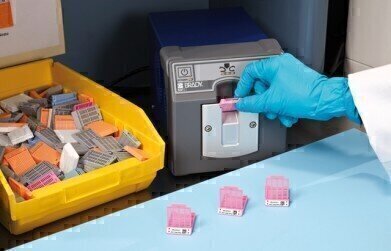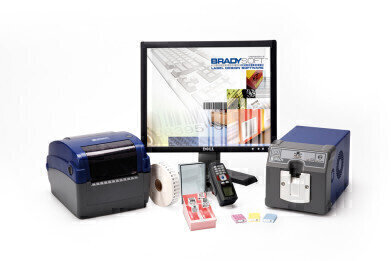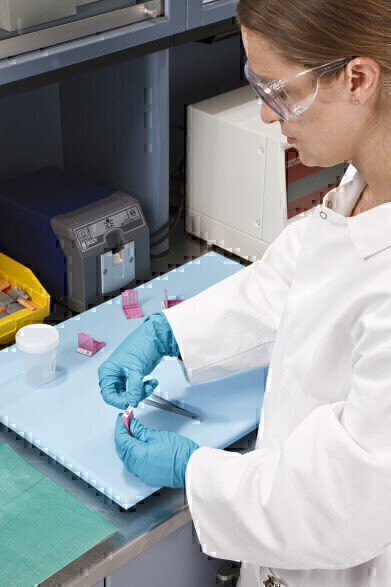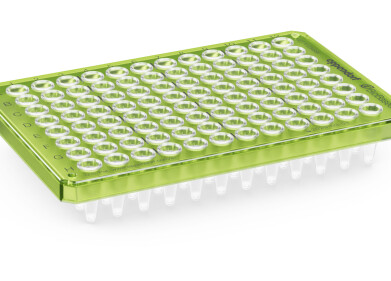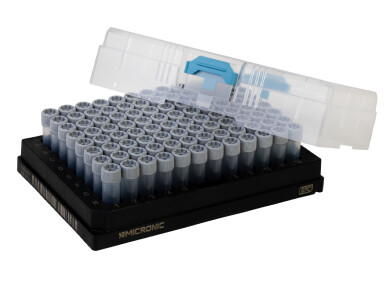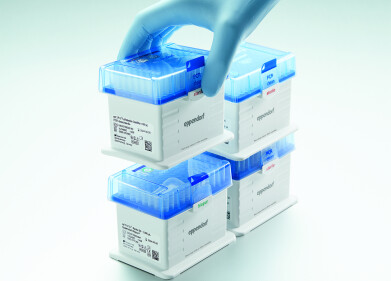Laboratory Products
Brady labelling solution is a clear advantage for a Cardiff University histology unit
Mar 03 2010
The new Label Attachment System from Brady is enabling a Histology Unit to put an end to hand-writing sample identification on tissue cassettes, and winning praise for the clear printed labels from researchers in Cardiff University’s School of Biosciences.
The Histology Unit offers standard paraffin wax histological services, including haematoxylin and eosin staining. Around 300–400 experimental samples are processed each month, mainly from cancer research projects undertaken by the internationally renowned Genetics group within the Cardiff School of Biosciences.
The Histology Unit previously used pencil to identify samples in tissue cassettes, causing a number of potential problems. According to unit manager, Derek Scarborough, ‘This method required writing very small in order to fit all the necessary information into the available space. The pencil marking sometimes became smudged, and reading someone else’s handwriting could be problematic. However, using Brady’s chemical-resistant labels and the new BSP™31 Label Attachment System, all our cassettes are permanently identified with absolute clarity. We can print one, two or three lines of text and know that the label will remain readable after all the histology processing, and it cannot become detached. At the embedding stage each sample is placed into a mould filled with molten wax and the cassette, minus its lid, is placed on top. Once the wax is cooled the labelled cassette acts both as the sample identifier and as a support for the block during sectioning on the microtome.’
Brady Tissue Cassette labels, printed with the BBP™11 printer and specially developed thermal transfer ribbon, are resistant to all the chemicals required for histological processing. The BSP™31 unit has four tiny heat probes which pierce the label and tissue cassette, melting the plastic just sufficiently to form permanent rivets which hold the label in place throughout the paraffin embedding process.
In the Cardiff Histology Unit, after sectioning, the unused portion of paraffin block with the labelled cassette attached is sent back to the research lab along with the associated slides. The blocks are stored in the lab and it is quite common for further slides to be required at a later date, for example, if a second immunohistochemistry run is needed. The advantages of the Brady labelling system are also evident at this stage, as Derek Scarborough explains: ‘We have received very positive feedback on the Brady cassette labels from researchers. They report that, as well as looking much more professional, the printed labels save time when they need to search through their archived blocks for a particular sample. Black text printed on a white label is very much quicker and easier to read than pencil on a green cassette. The clear labels therefore eliminate any confusion or mistakes which could occur with handwritten data.’
The Brady BSP™31 Label Attachment System provides a fast, simple and cost-effective way of guaranteeing labelling integrity throughout processing, embedding, sectioning and storage for up to 20 years.
www.bradyeurope.com/bsp31-en
www.bradyeurope.com/lab
Email: Karen_Lambrechts@bradycorp.com
Digital Edition
Lab Asia 31.4 August 2024
August 2024
Chromatography Articles - HPLC gradient validation using non-invasive flowmeters Mass Spectrometry & Spectroscopy Articles - MS detection of Alzheimer’s blood-based biomarkers Labo...
View all digital editions
Events
ACS National Meeting - Fall 2024
Aug 18 2024 Denver, CO, USA
Aug 25 2024 Copenhagen, Denmark
Aug 28 2024 Phnom Penh, Cambodia
Sep 04 2024 Chiba, Tokyo, Japan
Sep 04 2024 University of Warwick, Coventry, UK
